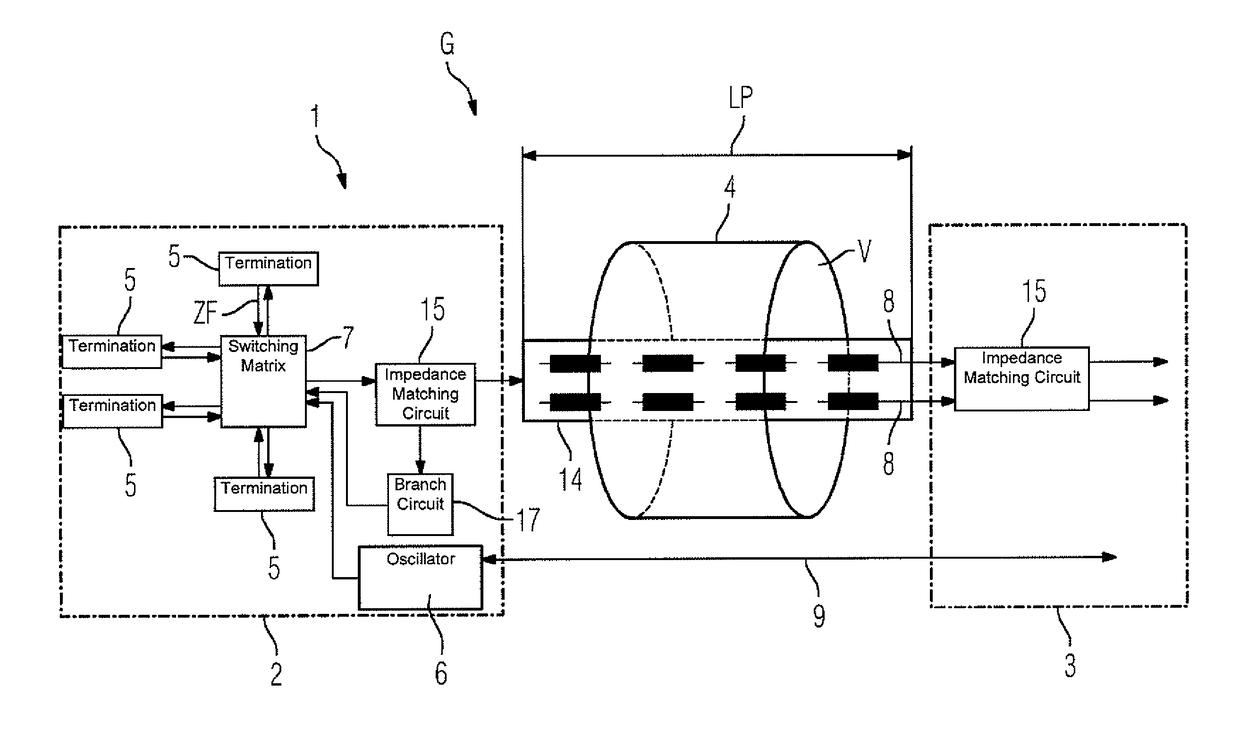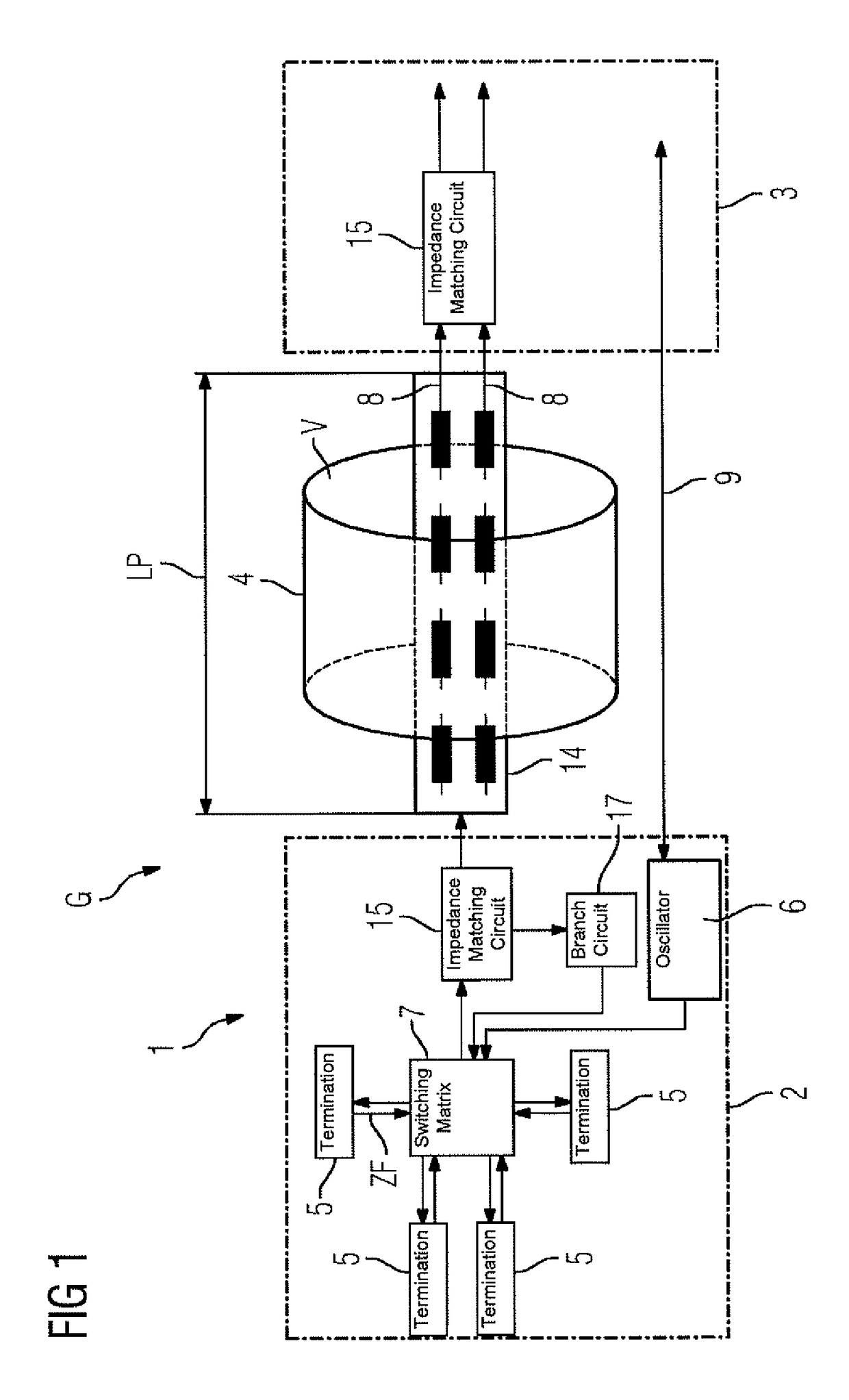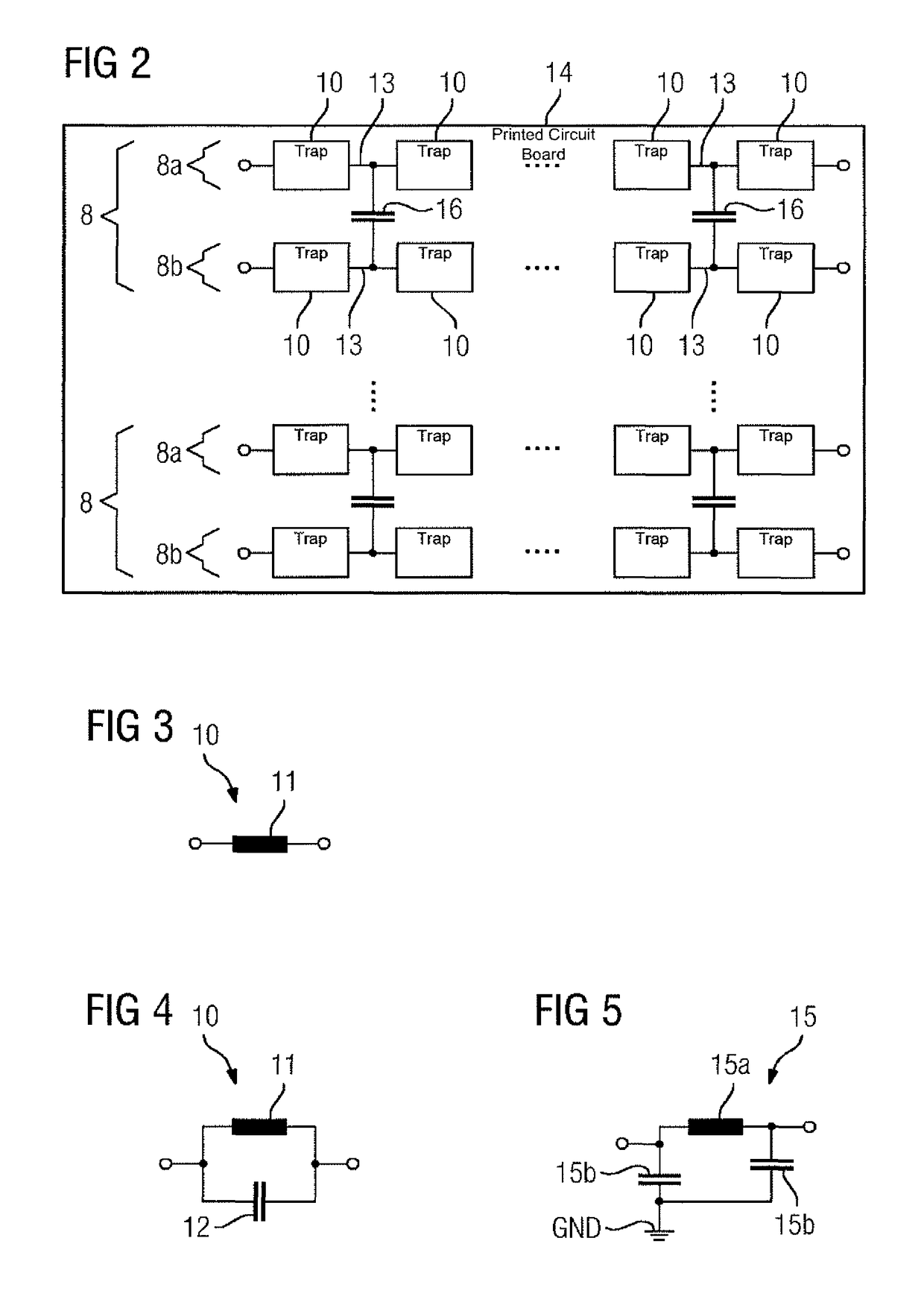Magnetic resonance device
a technology of magnetic resonance and standing wave trap, which is applied in the direction of measuring devices, magnetic measurements, instruments, etc., can solve the problems of labor-intensive and time-consuming manual production of standing wave traps, and achieve the effects of simplifying assembly and handling, simplifying component provision, and fast component placemen
- Summary
- Abstract
- Description
- Claims
- Application Information
AI Technical Summary
Benefits of technology
Problems solved by technology
Method used
Image
Examples
Embodiment Construction
[0045]FIG. 1 shows a schematic diagram of a patient couch 1 of an MR device G. The patient couch 1 has a head end 2 and a foot end 3 between which a homogeneity volume V that may be generated by a body coil 4 (which does not constitute a part of the patient couch 1) is located. The homogeneity volume V corresponds at least approximately to a volume that is suitable for the MR measurement of a patient lying on the patient couch 1. The body coil 4 of the MR device G is, for example, stationary, while the patient couch 1 is mounted as displaceable with respect thereto.
[0046]The head end 2 has a plurality (e.g., four) of coil connectors or terminations 5 for connecting local coils (not shown). The terminations 5 also effect a frequency conversion of measurement signals received by the local coils to lower intermediate frequencies ZF. For this purpose, a local oscillator 6 that generates an auxiliary frequency for downmixing the original measurement signals at Larmor frequency to the int...
PUM
 Login to View More
Login to View More Abstract
Description
Claims
Application Information
 Login to View More
Login to View More - R&D
- Intellectual Property
- Life Sciences
- Materials
- Tech Scout
- Unparalleled Data Quality
- Higher Quality Content
- 60% Fewer Hallucinations
Browse by: Latest US Patents, China's latest patents, Technical Efficacy Thesaurus, Application Domain, Technology Topic, Popular Technical Reports.
© 2025 PatSnap. All rights reserved.Legal|Privacy policy|Modern Slavery Act Transparency Statement|Sitemap|About US| Contact US: help@patsnap.com



